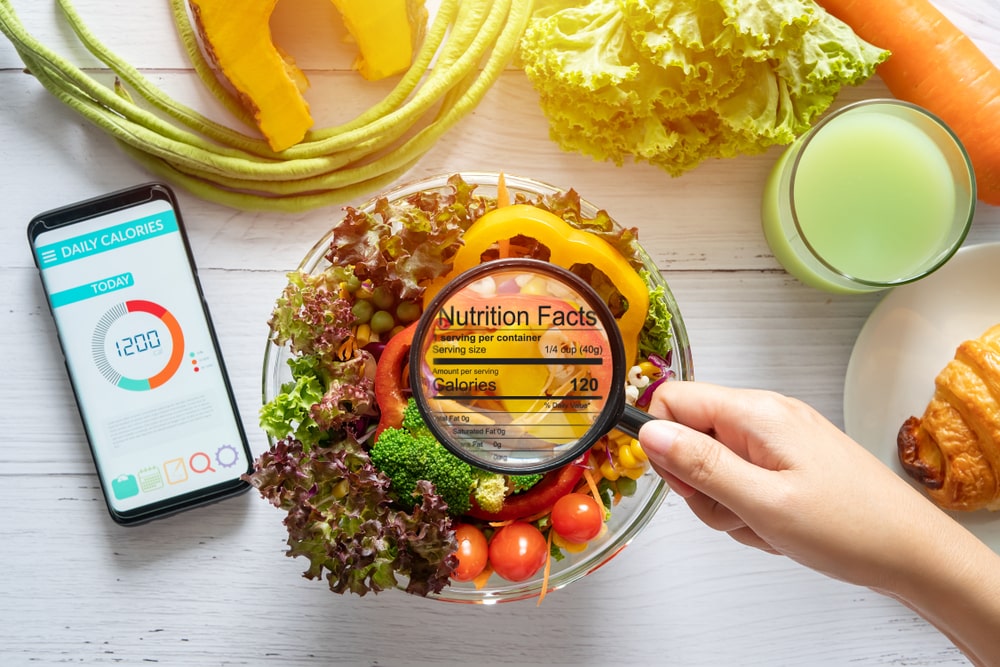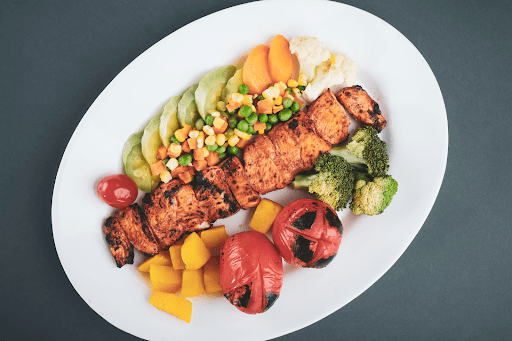A Beginner’s Guide to Healthy Eating
by Sabrina Ng

Are you trying to eat healthily but do not know where to start? Are you wondering what foods contribute to good health? With so much information available, knowing what is true and what is harmful can feel overwhelming.
Forget what you’ve seen on social media and ignore the latest trend. Here are three ways to navigate your way to healthy eating!
1. Eat Plenty of Fruits and Vegetables
Consuming a variety of fruits and vegetables may lower your risk of heart disease, type 2 diabetes, and obesity. Fruits and vegetables contain various nutrients, such as fibre which can help you to feel full for longer, build stool bulk, maintain blood glucose levels, and reduce cholesterol. They also contain various vitamins, minerals, and antioxidants that contribute to good health.

Tips for filling your plate with fruits and vegetables:
- Try filling half your plate with fruits and vegetables at every meal and snack. Stick with what is in season and easily accessible when possible. Here are some great choices to add to your meal:
- Broccoli
- Bok choy
- Some seaweeds (e.g., dulse and wakame)
- Dark leafy greens (e.g., kale and arugula)
- Carrots
- Pumpkin
- Sweet potatoes
2. Choose Whole-Grain Foods
Whole-grain foods are a healthier option than refined grains since the bran layer and germ are not removed and therefore contain more fibre, vitamins, and minerals.
By consuming more whole grains, you can lower your risk of developing cardiovascular disease, coronary heart disease, stroke, colorectal cancer, and hypertension. By not having the germ removed, whole grains contain vitamins B, E, and healthy fats to maintain good health.

Tips for filling your plate with whole-grain foods:
- Fill a quarter of your plate with whole-grain foods, such as:
- Whole-grain bread and pasta
- Quinoa
- Whole oats or oatmeal
- Choose grain products that are lower in salt, sugar, and saturated fat
- Choose food labelled as “whole grain” followed by the name of the grain as one of the main ingredients
- Use the nutrition facts table to compare grain products, and opt for those higher in fibre
3. Choose Lean Protein Foods
Protein is an important component of the diet as it helps to build and maintain skin, muscles, and bone.
Choose plant-based protein options when possible as they contain less saturated fats and more fibre. Try to eat two servings of fish per week as fish contain healthy polyunsaturated fatty acids (PUFA) such as DHA and EPA. Doing so may lower your risk of developing cardiovascular disease and contribute to better heart health.

Tips for filling your plate with protein food:
- Fill a quarter of your plate with protein food, such as:
- Nuts and seeds (e.g., peanuts and almonds)
- Eggs
- Low-fat dairy products (e.g., milk and yogurt)
- Beans, peas, and lentils (e.g., chickpeas and kidney beans)
- Poultry and lean red meat
4. Make Water Your Drink of Choice
Water is important for maintaining health and an excellent way to stay hydrated! If you want to drink something besides water, other healthy drink options include unsweetened low-fat milk, unsweetened soy-fortified plant-based beverages (e.g., soy beverages), and unsweetened coffee and teas.
Try to limit drinks high in sodium, sugars, and saturated fat (e.g. sugary and/or alcoholic drinks), as they often have little to no nutritional value.

Tips for reaching your fluid needs:
- Add fruit like frozen berries or lemon to your glass
- Drink water with every meal
- Start your day with a glass of water
- Keep a refillable water bottle with you when you go out
Healthy eating is more than the foods you eat.
Not only does eating a variety of foods contribute to healthy eating, but your eating habits also contribute to your overall health. Below are some key messages about healthy eating according to Canada’s Food Guide:
- Be mindful of your eating habits
- Cook more often at home
- Enjoy your food
- Eat meals with others
- Use food labels
- Limits highly processed food
- Be aware that food marketing can influence your food choices
Eating healthier doesn’t mean eating perfectly. By incorporating these simple tips into your day, you’ll not only feel better, but you’ll also begin to form healthy habits that will last a lifetime.
Take “small and manageable steps, have lots of self-compassion, and remember that the journey to improve your eating habits and relationship to food isn’t a linear one”. – Danica Jacobs, RD
About the Author: Sabrina Ng is a first-year dietetics student at the University of Alberta studying to become a Registered Dietitian.
Reviewed by: Lindsey McGregor, RD and Hannah Jackson
Images from Unsplash and Pexels
The Site is not intended to be a substitute for professional advice. Under no circumstances will we be liable for any loss or damage caused by your reliance on information obtained through the Site. It is your responsibility to evaluate the accuracy, completeness or usefulness of any information, opinion, advice or other content available through the Site. Please seek the advice of professionals, as appropriate, regarding the evaluation of any specific information, opinion, advice or other content. Never disregard professional advice, including medical advice, or delay in seeking it, because of something you have read on this Site.



